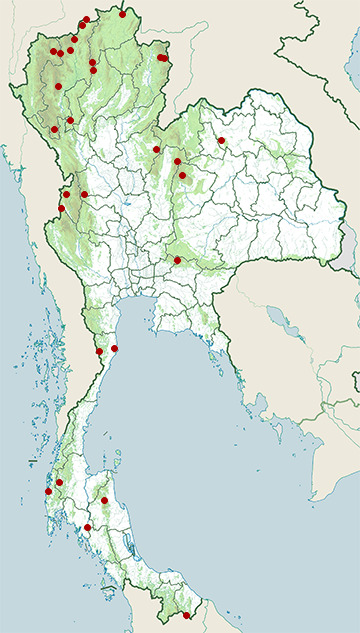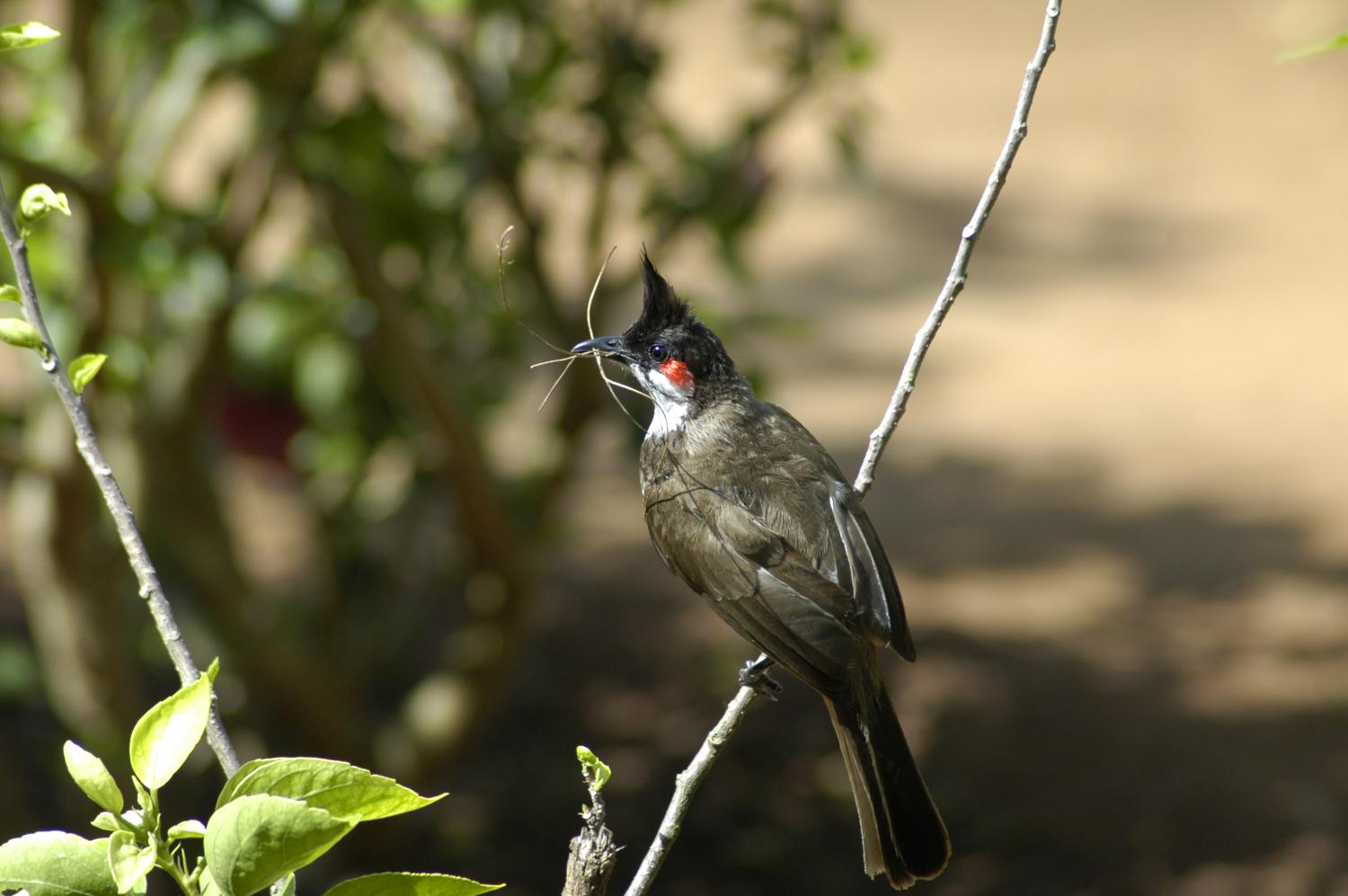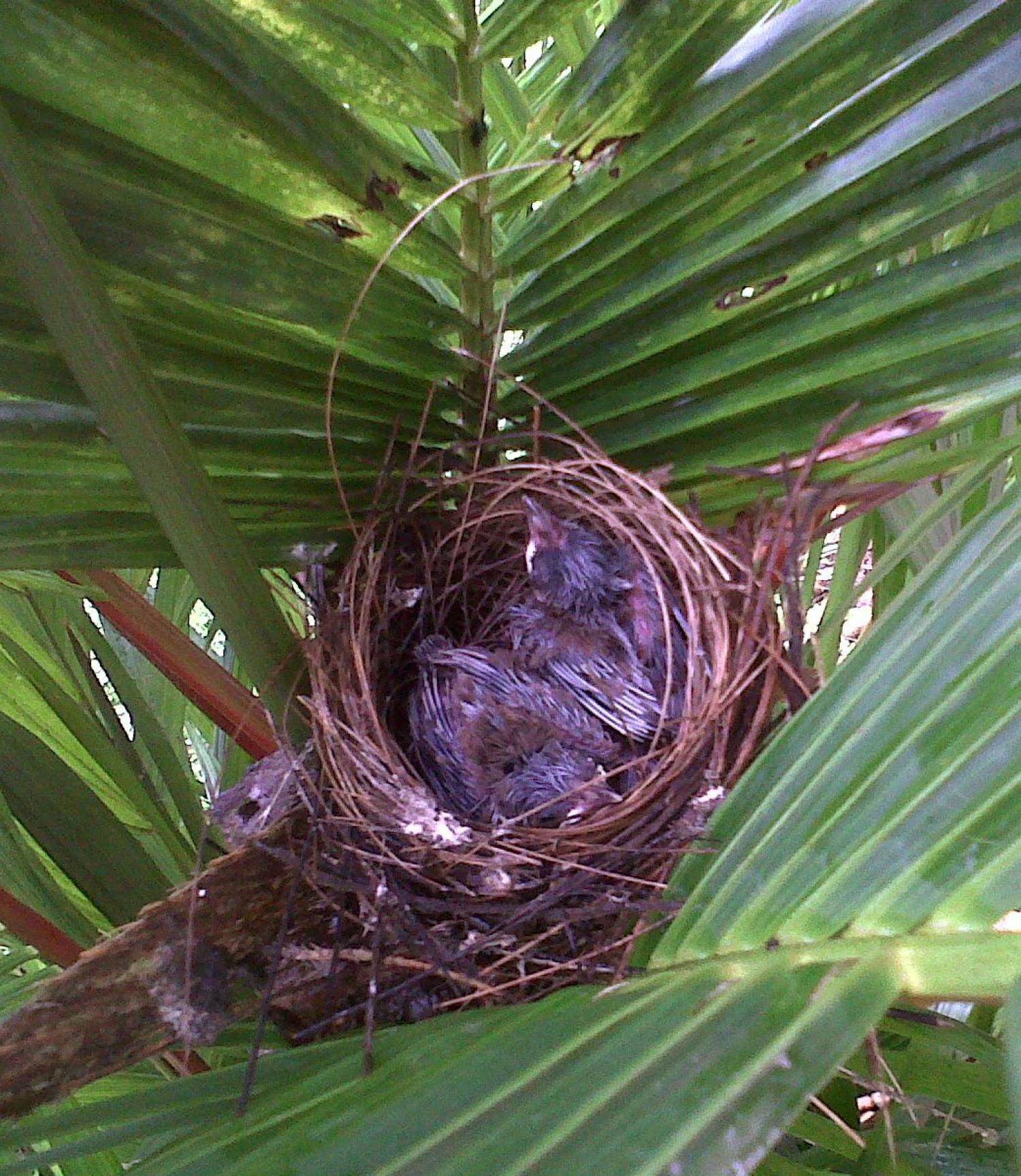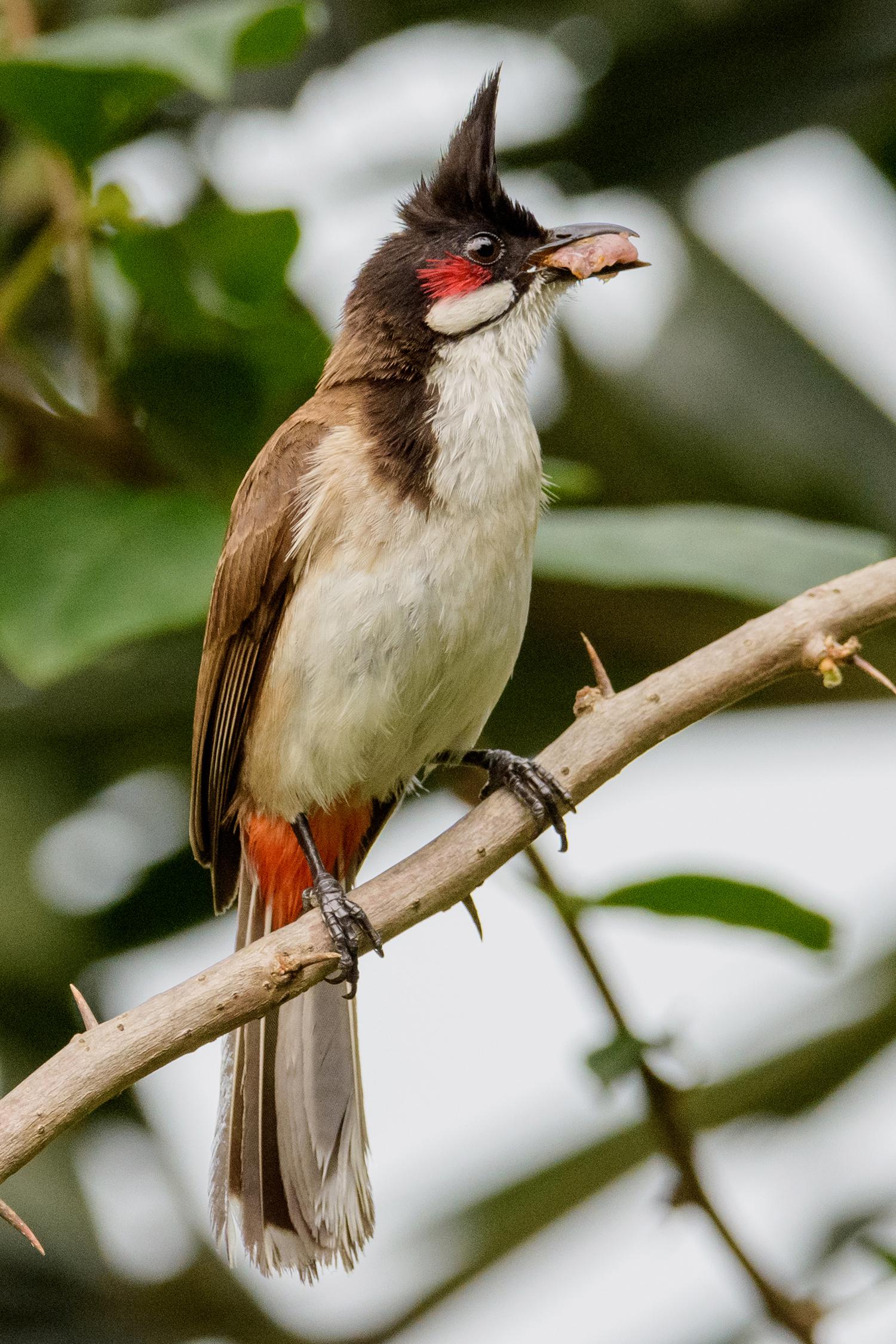Species of Thailand
Red-whiskered bulbul
Pycnonotus jocosus
Carolus Linnaeus, 1758
In Thai: นกปรอดหัวโขน
The red-whiskered bulbul (Pycnonotus jocosus), or crested bulbul, is a passerine bird found in Asia. It is a member of the bulbul family. It is a resident frugivore found mainly in tropical Asia. It has been introduced in many tropical areas of the world where populations have established themselves. It feeds on fruits and small insects. Red-whiskered bulbuls perch conspicuously on trees and have a loud three or four note call. They are very common in hill forests and urban gardens within their range.
Taxonomy and systematics
The red-whiskered bulbul was originally described with the shrikes within the genus Lanius in 1758 by Carl Linnaeus in his Systema Naturae. Hybrids have been noted in captivity with the red-vented, white-eared, white-spectacled, black-capped and Himalayan bulbuls. Leucism has also been recorded.
Subspecies
Nine subspecies are recognized:
- P. j. fuscicaudatus - (Gould, 1866): Originally described as a separate species. Found in western and central India. Has a nearly complete breast band and no white tip to tail.
- P. j. abuensis - (Whistler, 1931): Found in north-western India (type locality Mount Abu) Is pale and has a broken breast band and no white tip to tail.
- P. j. pyrrhotis - (Bonaparte, 1850): Originally described as a separate species in the genus Ixos. Found in the Terai of northern India and Nepal. It is pale above with white tail tips and a widely separated breast band
- P. j. emeria - (Linnaeus, 1758): Originally described as a separate species in the genus Motacilla. Found from eastern India to south-western Thailand. Is warm brown above with a slim bill and a long crest (also introduced into Florida)
- P. j. whistleri - Deignan, 1948: Found in the Andaman Islands and has a warm brown plumage above, a heavier bill and a shorter crest than P. j. emeria
- Chinese red-whiskered bulbul (P. j. monticola) - (Horsfield, 1840): Originally described as a separate species in the genus Ixos. Found from eastern Himalayas to northern Myanmar and southern China and has darker upperparts than P. j. pyrrhotis
- P. j. jocosus - (Linnaeus, 1758): Found in south-eastern China
- P. j. hainanensis - (Hachisuka, 1939): Found on Hainan Island (off south-eastern China)
- P. j. pattani - Deignan, 1948: Found from southern Myanmar and northern Malay Peninsula through Thailand and southern Indochina
Description
The red-whiskered bulbul is about 20 cm in length. It has brown upper-parts and whitish underparts with buff flanks and a dark spur running onto the breast at shoulder level. It has a tall pointed black crest, red face patch and thin black moustachial line. The tail is long and brown with white terminal feather tips, but the vent area is red. Juveniles lack the red patch behind the eye, and the vent area is rufous-orange.
The loud and evocative call is a sharp kink-a-joo (also transcribed as pettigrew or kick-pettigrew or pleased to meet you) and the song is a scolding chatter. They are more often heard than seen, but will often perch conspicuously especially in the mornings when they call from the tops of trees. The life span is about 11 years.
Distribution and habitat
This is a bird of lightly wooded areas, more open country with bushes and shrubs, and farmland. Irruptions have been noted from early times with Thomas C. Jerdon noting that they were "periodically visiting Madras and other wooded towns in large flocks."
It has established itself in Australia and in Los Angeles, Hawaii, and Florida in the United States, as well as in Mauritius, on Assumption Island and Mascarene Islands. In Florida, it is only found in a small area, and its population could be extirpated easily.
It was eradicated from Assumption Island in 2013–2015 to prevent colonisation of nearby Aldabra, the largest introduced bird-free tropical island.
The red-whiskered bulbul was introduced by the Zoological and Acclimatization Society in 1880 to Sydney, became well established across the suburbs by 1920, and continued to spread slowly to around 100 km away. It is now also found in suburban Melbourne and Adelaide, although it is unclear how they got there.
Behaviour and ecology
On the island of Réunion, this species established itself and also aided the spread of alien plant species such as Rubus alceifolius. In Florida they feed on fruits and berries of as many as 24 exotic plants including loquat (Eriobotrya japonica), Lantana spp., Brazilian pepper (Schinus terebinthifolius) and figs (Ficus). In Mauritius they aid the dispersal of Ligustrum robustum and Clidemia hirta. Seeds that pass through their gut germinate better. Populations of the red-whiskered bulbul on the island of Reunion have diversified in the course of thirty years and show visible variations in bill morphology according to the food resources that they have adapted to utilize.
Breeding
The breeding season is spread out and peaks from December to May in southern India and March to October in northern India. Breeding may occur once or twice a year. The courtship display of the male involves head bowing, spreading the tail and drooping wings. The nest is cup-shaped, and is built on bushes, thatched walls or small trees. It is woven of fine twigs, roots, and grasses, and embellished with large objects such as bark strips, paper, or plastic bags. Clutches typically contain two to three eggs. Adults (possibly the female) may feign injury to distract potential predators away from the nest. The eggs have a pale mauve ground colour with speckles becoming blotches towards the broad end. Eggs measure 21 mm and are 16 mm wide. Eggs take 12 days to hatch. Both parents take part in raising the young. Young birds are fed on caterpillars and insects which are replaced by fruits and berries as they mature. The chicks are psilopaedic (having down only in the pterylae). Eggs and chicks may be preyed on by the greater coucal and crows.
They defend territories of about 3000 m2 during the breeding season. They roost communally in loose groups of a hundred or more birds.
Food and feeding
The red-whiskered bulbul feeds on fruits (including those of the yellow oleander that are toxic to mammals), nectar and insects.
Threats
Several avian malaria parasites have been described from the species.
Relationship with humans
This species was once a popular cage bird in parts of India. C. W. Smith noted that
:These birds are in great request among the natives, being of a fearless disposition, and easily reclaimed. They are taught to sit on the hand, and numbers may thus be seen in any Indian bazaar.
The species continues to be a popular cagebird in parts of Southeast Asia.
This article uses material from Wikipedia released under the Creative Commons Attribution-Share-Alike Licence 3.0. Eventual photos shown in this page may or may not be from Wikipedia, please see the license details for photos in photo by-lines.
Category / Seasonal Status
BCST Category: Recorded in an apparently wild state within the last 50 years
BCST Seasonal status: Resident or presumed resident
Scientific classification
- Kingdom
- Animalia
- Phylum
- Chordata
- Class
- Aves
- Order
- Passeriformes
- Family
- Pycnonotidae
- Genus
- Pycnonotus
- Species
- Pycnonotus jocosus
Common names
- Thai: นกปรอดหัวโขน
Subspecies
Pycnonotus jocosus abuensis, Hugh Whistler, 1931
Range: Northwestern India (type locality Mount Abu) is pale and has a broken breast band and no white tip to tail
Pycnonotus jocosus emeria, Carolus Linnaeus, 1758
Range: Eastern peninsula and Ganges Delta is warm brown above with a slim bill and a long crest (also introduced into Florida)
Pycnonotus jocosus fuscicaudatus, John Gould, 1866
Range: Peninsular India has nearly complete breast band and no white tip to tail
Pycnonotus jocosus jocosus (nominate), Carolus Linnaeus, 1758
Range: Hong Kong
Pycnonotus jocosus monticola, Thomas Horsfield, 1840
Range: Found in northeastern India and has darker upperparts than pyrrhotis
Pycnonotus jocosus pattani, Herbert Girton Deignan, 1948
Range: Found in Thailand
Pycnonotus jocosus peguensis
Range: Not always recognized was described from southern Burma
Pycnonotus jocosus pyrrhotis, Charles Lucien Bonaparte, 1850
Range: The terai is pale above with white tail tips and widely separated breast band
Pycnonotus jocosus whistleri, Herbert Girton Deignan, 1948
Range: Found in the Andaman Islands and has a warm brown above, a heavier bill and a shorter crest than emeria
Synonyms
- Otocompsa emeria
Photos
Please help us review the bird photos if wrong ones are used. We can be reached via our contact us page.
Range Map

- Chae Son National Park
- Chiang Dao Wildlife Sanctuary
- Chiang Saen District, Chiang Rai
- Doi Inthanon National Park
- Doi Lang
- Doi Pha Hom Pok National Park
- Doi Phu Kha National Park
- Hala-Bala Wildlife Sanctuary
- Huai Nam Dang National Park
- Khao Luang National Park
- Khao Phra - Bang Khram Wildlife Sanctuary
- Khao Sam Roi Yot National Park
- Khao Sok National Park
- Khao Yai National Park
- Khun Chae National Park
- Khun Nan National Park
- Kui Buri National Park
- Mae Ping National Park
- Mae Wong National Park
- Nam Nao National Park
- Nong Wua So District, Udon Thani
- Omkoi Wildlife Sanctuary
- Pai District, Mae Hong Son
- Pha Daeng National Park
- Phu Hin Rong Kla National Park
- Phu Khiao Wildlife Sanctuary
- Takua Pa District, Phang Nga
- Thung Yai Naresuan Wildlife Sanctuary
- Umphang Wildlife Sanctuary






